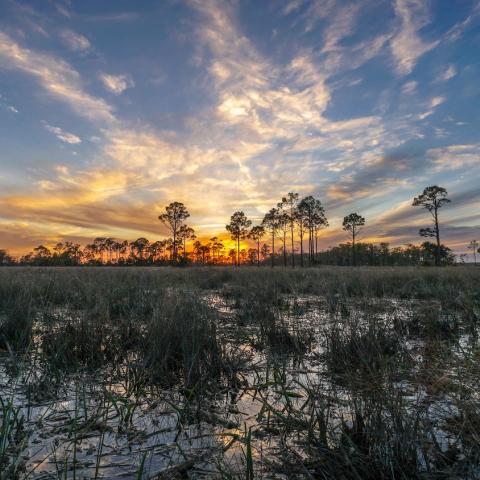
Eighty-five cigar orchid plants have been found in Big Cypress National Preserve/Dr. Hong Liu
A monthslong search for rare cigar orchids in Big Cypress National Preserve in Florida has turned up 85 of the plants the state of Florida considers endangered.
The survey of the 729,00-acre preserve was not exhaustive, covering just 705 acres. However, modeling used by the researchers suggested that the orchid's population in Big Cypress was "relatively stable for the time being."
Dr. Hong Liu, a Florida International University professor, began her search in late 2021 and logged 25 treks into the preserve's backcountry before concluding field work in spring 2022. In a report presented to the National Park Service this past February, the professor noted there was a concerning propensity of adult cigar orchids [61 percent].
"Only 4 percent of individuals were seedlings, and 35 percent were juveniles. Together with the observation that no plant had produced any fruit in the 2021 and 2022 seasons, this population structure indicates that recruitments of the cigar orchid population in [Big Cypress] were sparse," she wrote.
The researchers broke down the orchids they found into four categories: seedlings, juvenile plants, adults, and super adults. The "super adults" featured more than 20 stems.

The researchers classified the cigar orchids they found into four age groups/Dr. Hong Liu
Tens of thousands of cigar orchids once bobbed in the breezes across South Florida’s swamps and hardwood hammocks, Craig Pittman noted in a previous National Parks Traveler article on Liu's search. But logging, commercial harvesting, and habitat alteration have drastically cut the population.
More recently, the sublime plants have been a target for poachers as surely as the better-known but equally rare ghost orchid found in nearby Fakahatchee Strand Preserve State Park and Audubon’s Corkscrew Swamp Sanctuary. Liu told Pittman she did not know how much pilfered cigars might fetch on the black market, where collectors have been known to pay as much as $10,000 for one forbidden flower from a different species.
"Though not exhaustive, searches conducted in this study covered extensive and representative cigar orchid habitats in [Big Cypress] and yielded a good baseline on the population status of cigar orchids in the preserve," Liu noted in her report to the Park Service. "Several indications point to the limitation of recruitment, which include the fact that more than half of the cigar orchids found were of adult size, seedlings were rare, and no fruit or signs of fruit were observed during the surveys. All these findings point to a population that heavily relies on adult plant survival for existence and is highly vulnerable to poaching and environmental threats, along with disease."
The researcher noted that the oil bee, a "specialized and efficient pollinator of the cigar orchid," is not found in Big Cypress and that could be a factor in the low reproduction of the orchid in the preserve. And while she did not notice any disease on the orchids related to the Boisduval scale insect, Liu recommended the Park Service conduct a follow-up survey to determine that insect's impact on the cigar orchid as well as on other wild orchid species in the preserve.
The researcher also suggested that the Park Service should pursue additional studies every five years at least to determine whether the species' population was indeed stable. If a decline was noted, she suggested "in-situ hand pollination to boost fruit production in cigar orchid hotspots" in the preserve.



 Support Essential Coverage of Essential Places
Support Essential Coverage of Essential Places






